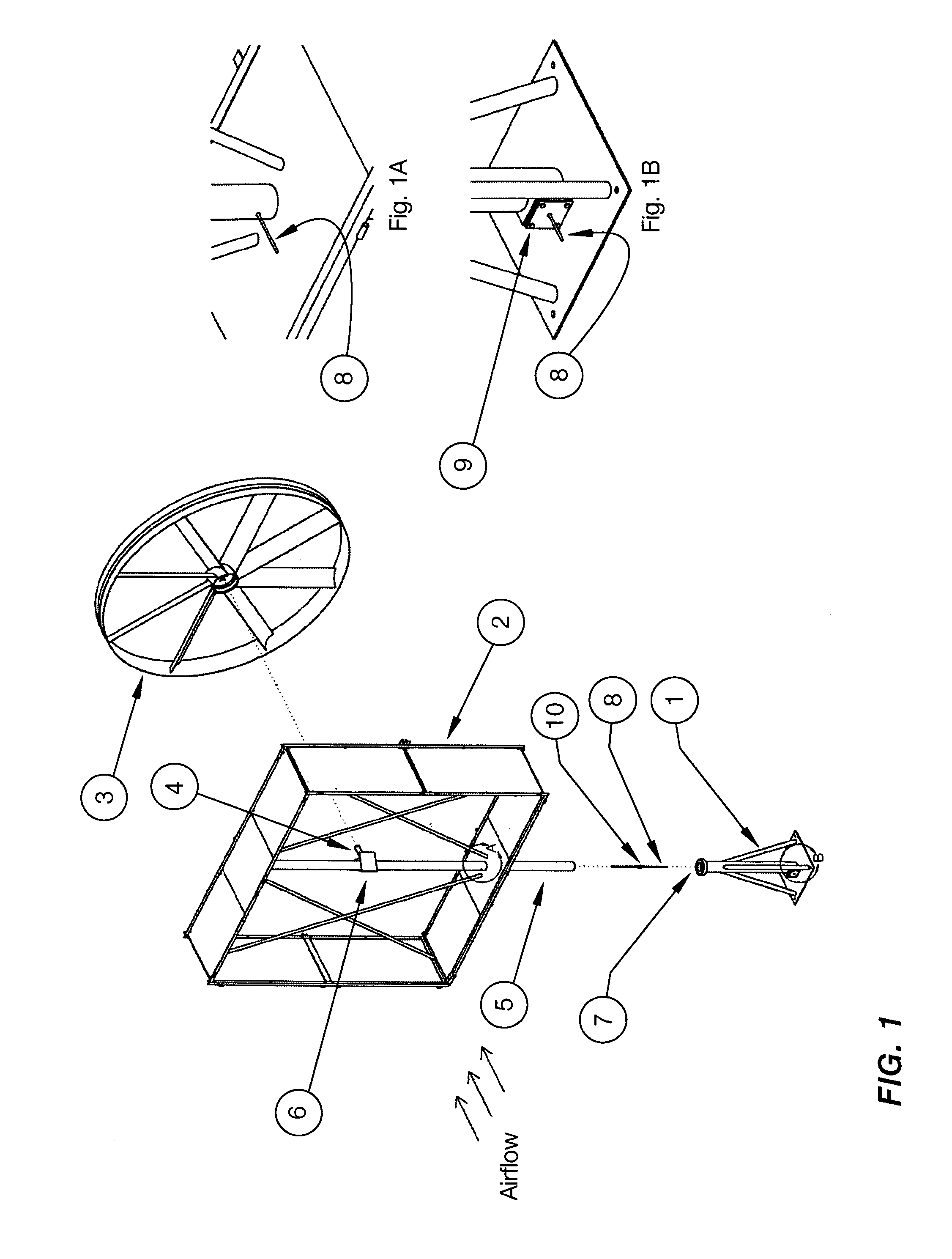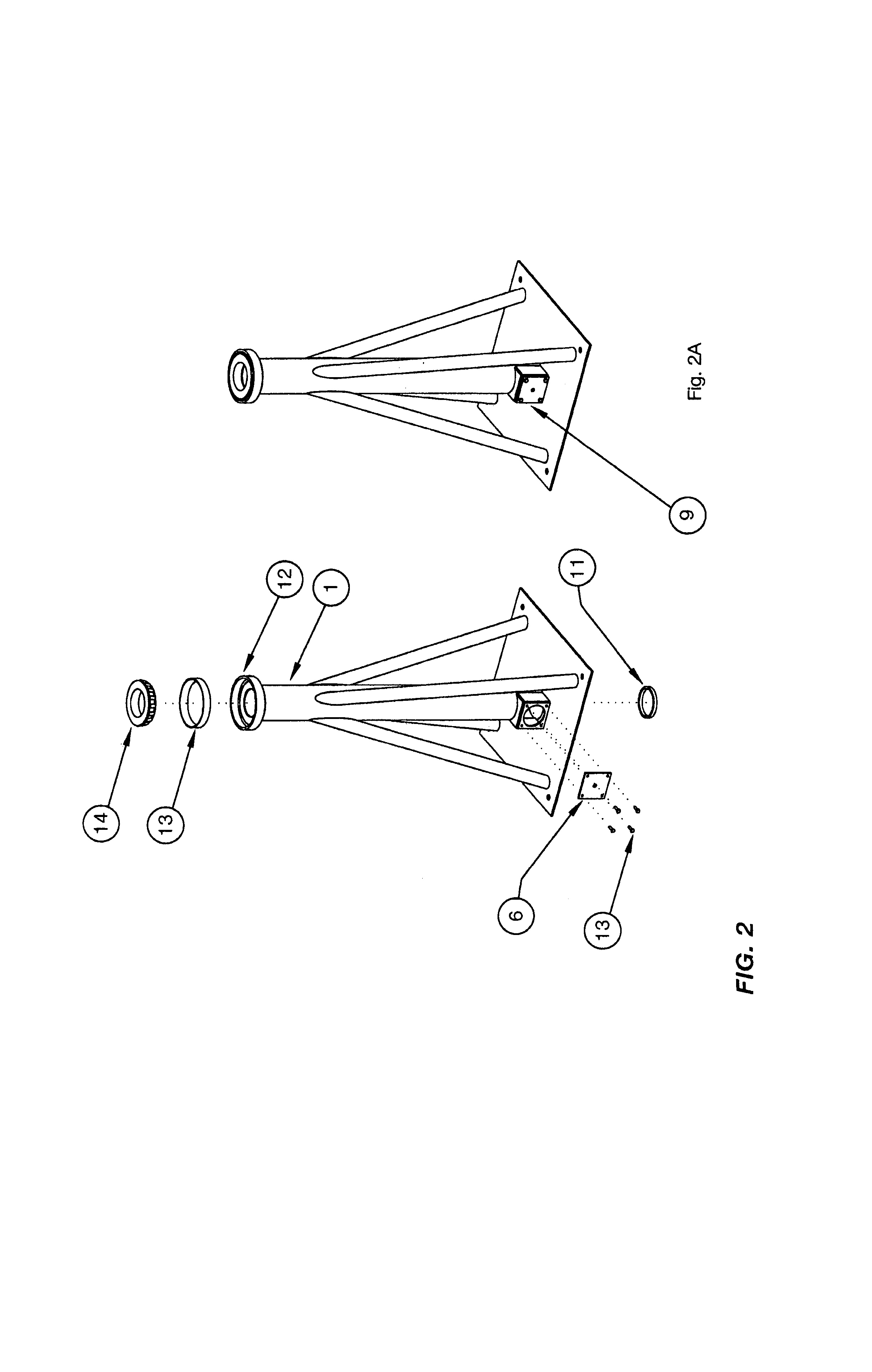Variable aperture velocity augmented ducted fan wind turbine
a ducted fan and variable aperture technology, applied in the direction of machines/engines, sustainable buildings, electric generator control, etc., can solve the problems of increasing the apparentity of the problem, increasing the cost of complete electrical utility infrastructure, and generating electrical power expensively shipped via high tension lines to the eventual power consumers, so as to enhance the flow of wind stream, improve safety and efficiency, and enhance the effect of stream flow over buildings
- Summary
- Abstract
- Description
- Claims
- Application Information
AI Technical Summary
Benefits of technology
Problems solved by technology
Method used
Image
Examples
Embodiment Construction
[0046]Considering the drawings, wherein like reference numbers denote like parts throughout the various drawing figures, reference numeral 1 is directed to the foundation base of the center fan power cell of the DFWT according to the present invention.
[0047]In essence, and with respect to FIG. 1, the center fan power cell assembly itself is denoted by the numeral 2, with the turbine fan assembly itself, denoted by the numeral 3, to be attached to the welded hub spindle, denoted by the numeral 4, welded to the center cell power pipe mast denoted by the numeral 5, around which the incoming air mass diverter, spinner equivalent V plate is denoted by the numeral 6. As can be seen in FIG. 1, the center cell pipe mast fits within the center pipe of the foundation base pipe, the open top aperture of which is denoted by the numeral 7. FIG. 1 also shows the generator 21, power output wire 8 traveling through the inner fan power cell mast pipe 5, and also through the mounting base assembly ou...
PUM
 Login to View More
Login to View More Abstract
Description
Claims
Application Information
 Login to View More
Login to View More - R&D
- Intellectual Property
- Life Sciences
- Materials
- Tech Scout
- Unparalleled Data Quality
- Higher Quality Content
- 60% Fewer Hallucinations
Browse by: Latest US Patents, China's latest patents, Technical Efficacy Thesaurus, Application Domain, Technology Topic, Popular Technical Reports.
© 2025 PatSnap. All rights reserved.Legal|Privacy policy|Modern Slavery Act Transparency Statement|Sitemap|About US| Contact US: help@patsnap.com



